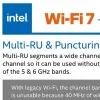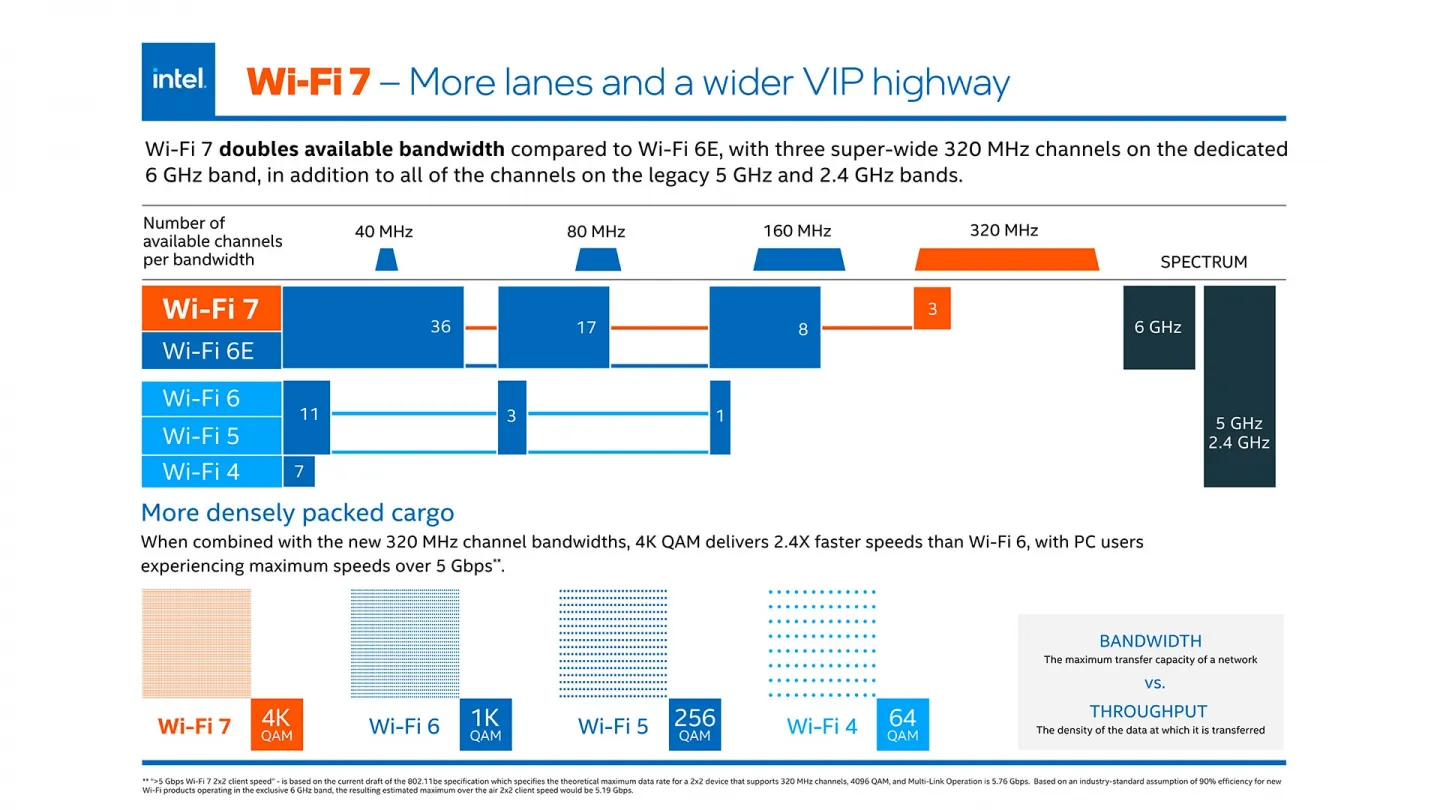Before the Institute of Electrical and Electronics Engineers (IEEE) has officially ratified the Wi-Fi 7 (802.11be) standard, Intel is already preparing its technological contribution. In the upcoming year, Intel aims to release its first set of Wi-Fi 7 controllers and adapters, diversified in several configurations.
Intel's existing offerings include the M.2-2230 draft Wi-Fi 7 adapters: Intel BE200 and Intel BE202. Both operate within the 2.4 GHz, 5 GHz, and 6 GHz frequency bands, and support 2x2 TX/RX streams. The BE200 claims a top speed of 5 Gbit/s, which doesn't reach the potential maximum of the standard. While Intel remains reserved on the exact differences between BE200 and BE202, it has communicated that the BE200 comes pre-certified for Wi-Fi 7. Both adapters' compatibility extends to PCIe and USB interfaces, positioning them for integration in desktop motherboards and laptops.
One notable hardware integration of the BE200 adapter is in the Gigabyte Aorus Z790 Master X motherboard (PCB revision 1.2), as indicated by @momomo_us. On the other hand, different platform variants are set to incorporate Qualcomm's Wi-Fi 7 QCNCM865 (PCB rev. 1.0) and MediaTek's Wi-Fi 7 MT7927, RZ738 (PCB rev. 1.1). To fully utilize Wi-Fi 7's capabilities, end-users should ensure pairing with Wi-Fi 7-compliant routers and access points.
Wi-Fi 7 proposes a substantial aggregated bitrate of 40 Gbit/s, posing a challenge to wired Ethernet for numerous users. Achieving this throughput, Wi-Fi 7 employs three frequency bands—2.40 GHz, 5 GHz, and 6 GHz—extends channel width to 320 MHz, and integrates 4096-QAM. Yet, real-world performance may not always match these theoretical limits, as seen with Intel's BE200.
Further evolving from its forerunners, Wi-Fi 7 mandates the inclusion of features like MU-MIMO (Multi-User Multiple-Input Multiple-Output) and OFDMA (Orthogonal Frequency-Division Multiple Access), features previously seen in Wi-Fi 6 and 6E. Such advancements aim to bolster wireless connection efficiency and overall capacity.
Initially conceptualized for bandwidth-heavy applications, including AR and VR headsets reliant on Intel's WiGig technology, Wi-Fi 7 has seen positive reception from industry stakeholders, including Intel. The IEEE has scheduled the official adoption of the IEEE 802.11be specification for 2025. However, Intel is proactive, with its introduction of Wi-Fi 7-compliant equipment.
Still, the universal adoption of Wi-Fi 7 devices is expected to be gradual. Full specification certification is projected for 2024, with an increase in compatible device availability subsequently. For those who have recently transitioned to Wi-Fi 6 or 6E infrastructure, the current setup will likely remain adequate for the near future.



